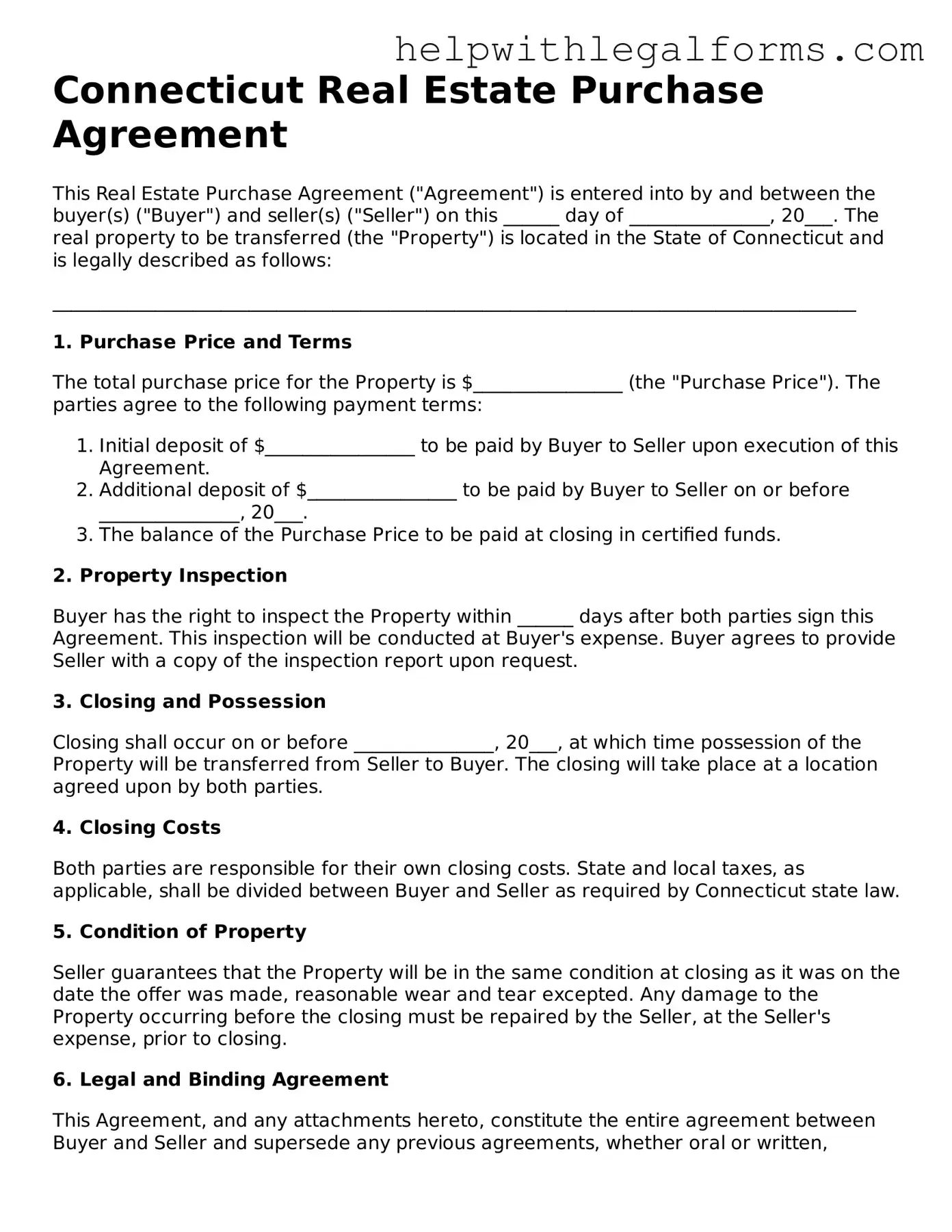Connecticut Real Estate Purchase Agreement
This Real Estate Purchase Agreement ("Agreement") is entered into by and between the buyer(s) ("Buyer") and seller(s) ("Seller") on this ______ day of _______________, 20___. The real property to be transferred (the "Property") is located in the State of Connecticut and is legally described as follows:
______________________________________________________________________________________
1. Purchase Price and Terms
The total purchase price for the Property is $________________ (the "Purchase Price"). The parties agree to the following payment terms:
- Initial deposit of $________________ to be paid by Buyer to Seller upon execution of this Agreement.
- Additional deposit of $________________ to be paid by Buyer to Seller on or before _______________, 20___.
- The balance of the Purchase Price to be paid at closing in certified funds.
2. Property Inspection
Buyer has the right to inspect the Property within ______ days after both parties sign this Agreement. This inspection will be conducted at Buyer's expense. Buyer agrees to provide Seller with a copy of the inspection report upon request.
3. Closing and Possession
Closing shall occur on or before _______________, 20___, at which time possession of the Property will be transferred from Seller to Buyer. The closing will take place at a location agreed upon by both parties.
4. Closing Costs
Both parties are responsible for their own closing costs. State and local taxes, as applicable, shall be divided between Buyer and Seller as required by Connecticut state law.
5. Condition of Property
Seller guarantees that the Property will be in the same condition at closing as it was on the date the offer was made, reasonable wear and tear excepted. Any damage to the Property occurring before the closing must be repaired by the Seller, at the Seller's expense, prior to closing.
6. Legal and Binding Agreement
This Agreement, and any attachments hereto, constitute the entire agreement between Buyer and Seller and supersede any previous agreements, whether oral or written, concerning the Property. This Agreement is binding upon both parties, their heirs, executors, administrators, successors, and assigns.
7. Governing Law
This Agreement shall be governed by and construed in accordance with the laws of the State of Connecticut.
IN WITNESS WHEREOF, the parties have signed this Agreement as of the dates written below:
Buyer's Signature: __________________________________ Date: _______________, 20___
Seller's Signature: _________________________________ Date: _______________, 20___
